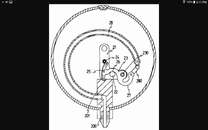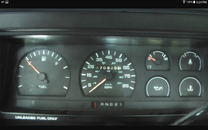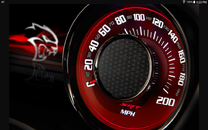My basic ? Is why are almost all spg's 5000psi. Would it not make more sense to make them 4000psi as as the majority of tanks out there max out at 3000-3500psi. And that is what most people use. I think that it would be easier to read. Especially if you keep the same sweet on the gauge. I do see a purpose for a 5000psi spg in tech. But not for the recreational dive world.
You are using an out of date browser. It may not display this or other websites correctly.
You should upgrade or use an alternative browser.
You should upgrade or use an alternative browser.
500psi
- Thread starter mbsdiver
- Start date
Please register or login
Welcome to ScubaBoard, the world's largest scuba diving community. Registration is not required to read the forums, but we encourage you to join. Joining has its benefits and enables you to participate in the discussions.
Benefits of registering include
- Ability to post and comment on topics and discussions.
- A Free photo gallery to share your dive photos with the world.
- You can make this box go away
- Messages
- 20,561
- Reaction score
- 14,944
- # of dives
- I'm a Fish!
The reason for the gauges going to to 5000psi is because almost all SPG's are made by a company called Termo in Italy. Why is this important? In Europe they have true 300bar tanks *4350psi*. This is over the 4000psi range you asked about. By using a single 5000psi range, it allows them to use a single bourdon tube for each size of gauge. This keeps the cost down in manufacturing where the only differences between the gauges are the paper insert with either PSI or BAR and whatever company logo is being put in there. All of the guts of the gauges are identical whether you are buying from Dive Rite, Scubapro, HOG, Halcyon, whoever. They're all same.
A perk of this is found in cave diving where we try to fill our tanks to 3600psi to make diving "thirds" easier. SPG's are most accurate in the middle, i.e. a 5000psi gauge is most accurate from 2000-3000psi. Our "turn" pressure is 2400psi which is right in the sweet spot of that gauge which helps.
A perk of this is found in cave diving where we try to fill our tanks to 3600psi to make diving "thirds" easier. SPG's are most accurate in the middle, i.e. a 5000psi gauge is most accurate from 2000-3000psi. Our "turn" pressure is 2400psi which is right in the sweet spot of that gauge which helps.
DiverDownD3
Contributor
Tbone pretty much nailed it, especially his statement regarding SPGs being accurate in the middle. The top and bottom 20% are susceptible to some variance (depending on the level of calibration).
Grey Goose
Contributor
I note that gauges are not particularly accurate at end of dive. Are they consistently not accurate or intermittently not accurate? Reason for asking is that I've breathed my spg down quite a bit, say 100PSI with no problems. Should I always be able to breath it down to 100psi with no problems (assuming same depth, same season)? (Note: "always" not implying that this is done every time, but rather can i expect to breath it down the next time, whenever that would be given same conditions)?
Grey goose i would not for me it is just a trust factor.
Just a little story i was in a pool and with my son we have identical gear his started breathing hard at 100psi and quit just below 100psi. Mine started breathing hard about 50psi and quit about 10 breaths after bottoming out.
Just a little story i was in a pool and with my son we have identical gear his started breathing hard at 100psi and quit just below 100psi. Mine started breathing hard about 50psi and quit about 10 breaths after bottoming out.
- Messages
- 20,561
- Reaction score
- 14,944
- # of dives
- I'm a Fish!
these are analog gauges that work by a piece of metal being bent by the pressure. 100psi is not a lot and below 200-300 psi depending on depth, there are a lot of weird things that go on inside of the regulator that will give some strange readings on an SPG. Below about 1000psi, I don't consider the SPG's to be better than +200psi accurate, and the bigger gauges only accurate to +100 psi when they are in their sweet spot. Remember that even accuracy to 1% is still +50psi with these gauges and 1% accuracy is very good for an analog gauge this small....
Tbone i disagree with the manufacturing cost these things cost probably less than $10 to make. And the cost would be miniscule to change from 5000 down to 4000. I think they would be easer to understand for the new diver.think of it this way on the same size round speedometer what's easier to read one that goes to 85 or one that goes 120. You can keep the same sweep and it would easer to read for the average sport diver. It would a simple arm length change on the internals and the face.


- Messages
- 20,561
- Reaction score
- 14,944
- # of dives
- I'm a Fish!
I know how the tubes work, but remember, one company, one single company, builds essentially ALL of the SPG's for the global scuba market. That's a LOT of gauges. They have to produce 1", 1.5", 2", 2.5", 3" gauges so that is 5 internal parts on it's own. If they had multiple scales, that would essentially double the number of parts and inventory that they have to maintain in order to keep supply. This increases manufacturing costs because of logistics, not because the actual product parts are more expensive.
Typical round speedo in a vehicle with 180* sweet. 120/140/160mph is always easier to read than 90 because it puts the "highway" speeds of 50-70 at the top middle of the gauge, right where you are eye is going to have the easiest time looking at it. A 90mph gauge would put your normal highway speeds at the very end of the gauge and that makes reading more difficult. That is why you rarely will see speedo's with a smaller swing.
The current 5000psi gauges are basically the same. The "normal" pressure ranges of 0-3600psi are in the top 180* swing of the SPG. Very easy to read. You want something easier to read with better precision? Go to a larger face gauge.
Typical round speedo in a vehicle with 180* sweet. 120/140/160mph is always easier to read than 90 because it puts the "highway" speeds of 50-70 at the top middle of the gauge, right where you are eye is going to have the easiest time looking at it. A 90mph gauge would put your normal highway speeds at the very end of the gauge and that makes reading more difficult. That is why you rarely will see speedo's with a smaller swing.
The current 5000psi gauges are basically the same. The "normal" pressure ranges of 0-3600psi are in the top 180* swing of the SPG. Very easy to read. You want something easier to read with better precision? Go to a larger face gauge.
Im not talking of changing all the gauge sizes just a option on the 2" the common one that you find in most all consoles. As 4 gauges which one would be easer to read for the new and average diver.im just talking something simple to do on just the 2" . Im in manufacturing and when a client requests a change something simple like that it's not hard to do.




- Messages
- 17,334
- Reaction score
- 13,743
- # of dives
- 100 - 199
The cost of stocking two different types of Bourdon tube, the logistics of feeding the right type of tube to the right production line, and the risk of a screw-up in production (putting the wrong Bourdon tube behind the wrong scale) are not minuscule, though.the cost would be miniscule to change from 5000 down to 4000
Similar threads
- Replies
- 51
- Views
- 3,765
- Replies
- 3
- Views
- 202
- Replies
- 0
- Views
- 849
- Replies
- 66
- Views
- 5,758
- Replies
- 20
- Views
- 1,481




